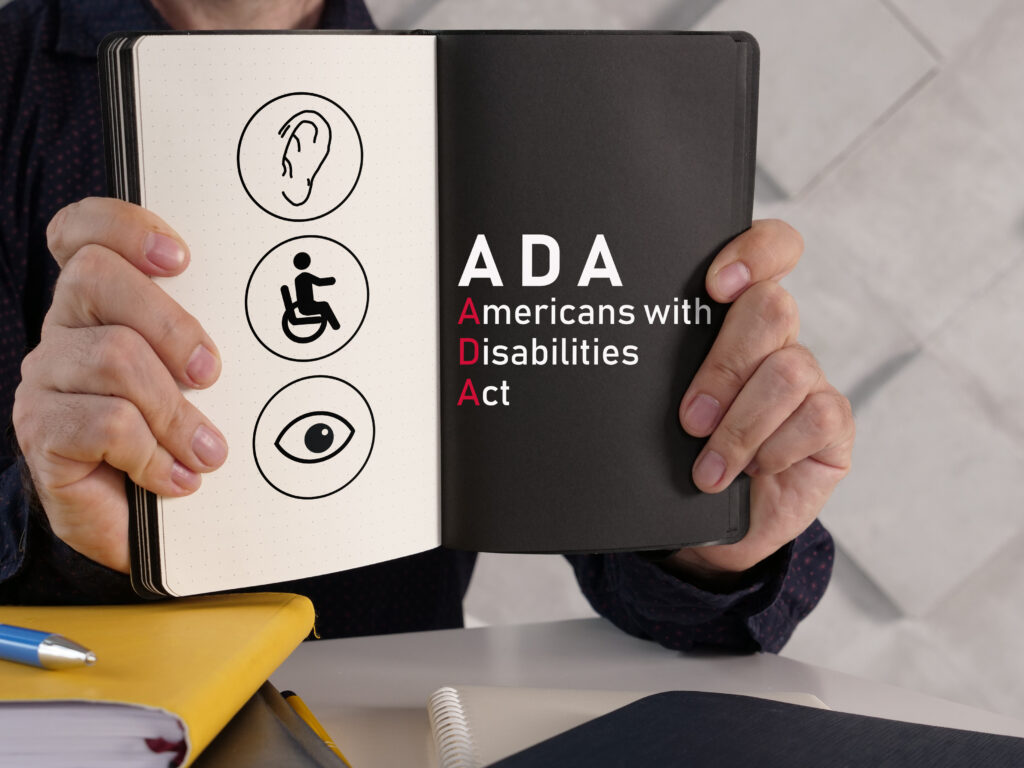
United States Justice Department has implemented new ADA rules
Last Updated on June 27, 2023
Revised regulations implementing the Americans with Disabilities Act (“ADA”) took effect on March 15, 2011. The revised rules are the Justice Department’s first major revision of its guidance on accessibility in 20 years.
The Justice Department estimates that more than 50 million Americans – 18% of our population – have disabilities. In addition, approximately 71.5 million baby boomers will be over the age of 65 by the year 2030 and will be demanding products, services, and environments that meet their age-related physical needs. ADA regulations apply to the activities of more than 80,000 units of state and local government and more than seven million places of public accommodation, including stores, restaurants, shopping malls, sporting arenas, movie theaters, doctors’ and dentists’ offices, and hotels. Nearly all businesses that serve the public are covered by the ADA’s regulations, regardless of the size of the business or the age of its building(s). Businesses covered by the ADA are required to take reasonable measures to modify their business practices and procedures when necessary in order to serve customers with disabilities and to take steps to communicate effectively with customers with disabilities. The ADA also requires businesses to remove architectural barriers in existing buildings and to make sure that newly built or altered facilities are constructed to be accessible to individuals with disabilities. Commercial facilities, such as office buildings, factories, warehouses, or other facilities that do not provide goods or services directly to the public are only subject to the ADA’s requirements for new construction and alterations. The rules were signed by Attorney General Eric Holder on July 23, 2010.
On March 16, 2011, the Justice Department released a new 16-page document, “ADA Update: A Primer for Small Business” in order to assist small businesses with understanding the new and updated accessibility requirements. This document provides valuable guidance and specific examples of measures that would serve to comply with the new rules, which expand accessibility in a number of areas and, for the first time, provide detailed guidance on how to make business facilities, including recreational facilities, accessible.
The new ADA rules adopt the 2010 ADA Standards for Accessible Design, which the Department intended to be more user-friendly for building code officials, builders, and architects and to be more in harmony with state and local accessibility codes than the former Standards adopted in 1991. In addition to adopting the 2010 accessibility standards, the amended regulations contain many new or expanded provisions pertaining to general nondiscrimination policies, including the use of service animals, the use of wheelchairs and other power-driven mobility devices, providing interpreter services through video conferencing, and the effect of the new regulations on existing facilities. The publications made available of March 16, 2011 are intended to be the first of several planned publications from the Department of Justice aimed at helping businesses understand their obligations under the ADA.
If a business facility was built or altered in the past 20 years in compliance with the 1991 Standards promulgated by the Department of Justice, or if a company removed barriers to specific elements in compliance with those Standards, the new Standards provide a “safe harbor” such that the business would not need to make further modifications, even if the new Standards contain different requirements. For example, the 2010 Standards lower the mounting height for light switches and thermostats from 54 inches to 48 inches. If a company’s light switches are already installed at 54 inches in compliance with the 1991 Standards, the company is not required to lower them to 48 inches.
However, if the business chooses to alter elements that had been in compliance with the 1991 Standards, the business would need to thereafter comply with the 2010 Standards. For example, the 1991 Standards require one van-accessible space for every eight accessible parking spaces. The 2010 Standards require one van-accessible space for every six accessible spaces. If a business has complied with the 1991 Standards, it is not required to create additional van-accessible spaces in order to meet the 2010 Standards. However, if the company chooses to re-stripe its parking lot, which is considered an alteration, it would need to provide the ratio of van-accessible spaces required in the 2010 Standards. An alteration is defined as remodeling, renovating, rehabilitating, reconstructing, changing or rearranging structural parts or elements, changing or rearranging plan configuration of walls and full-height partitions, or making other changes that affect the usability of the facility. Examples provided in the small business primer include moving walls, moving a fixed ATM to another location, installing a new sales counter or display shelves, changing a doorway entrance, or replacing fixtures, flooring or carpeting. Normal maintenance, such as re-roofing, painting, or wallpapering, is not an alteration.
If you have questions about this or other employment-related issues, please contact Connie Carrigan, ccarrigan@smithdebnamlaw.com.

